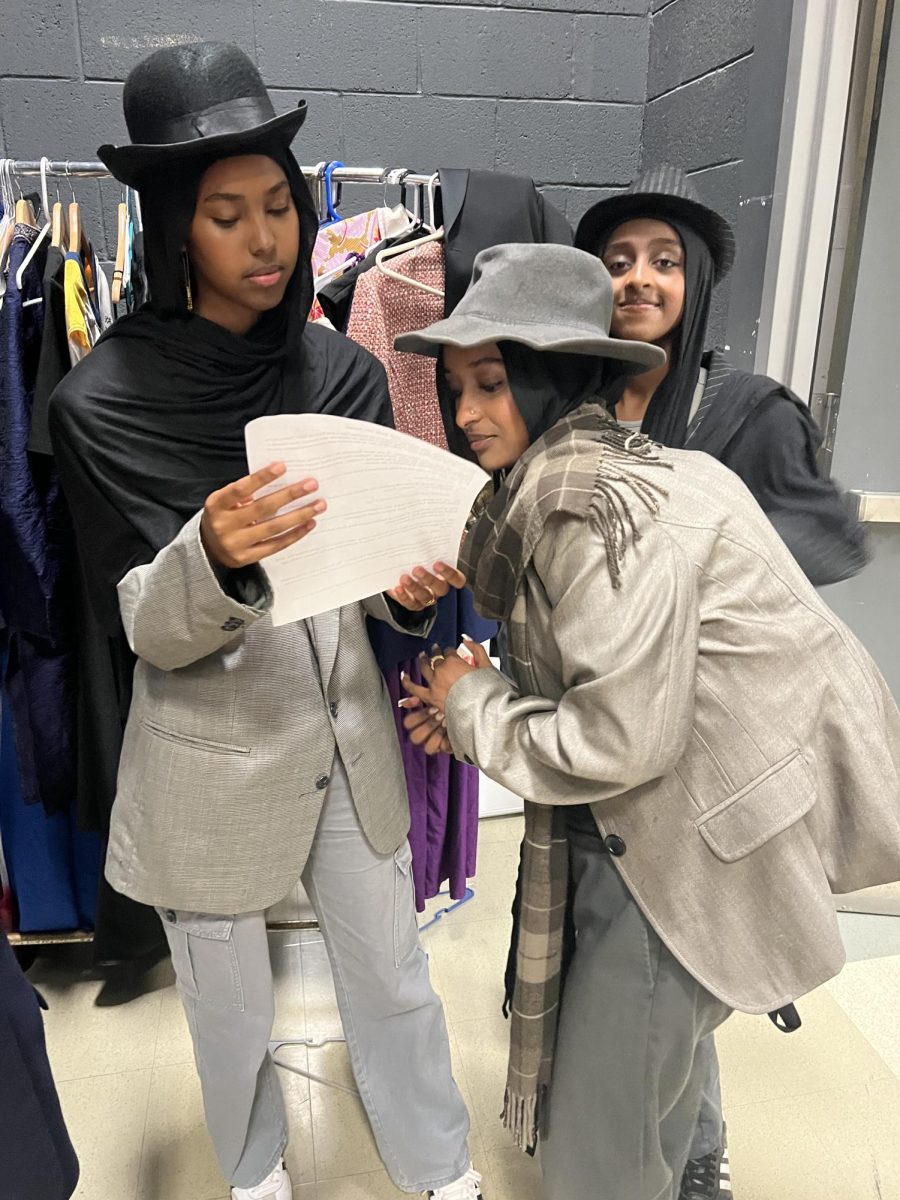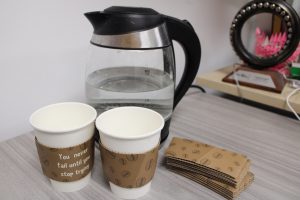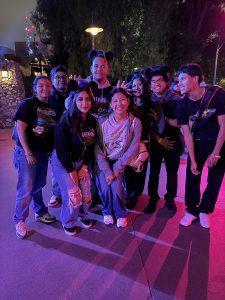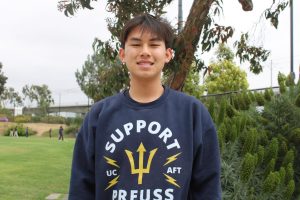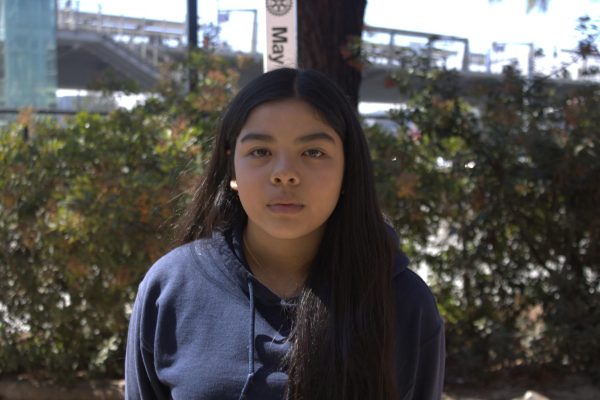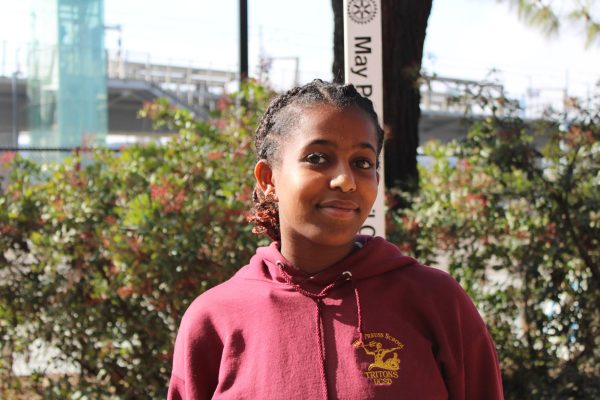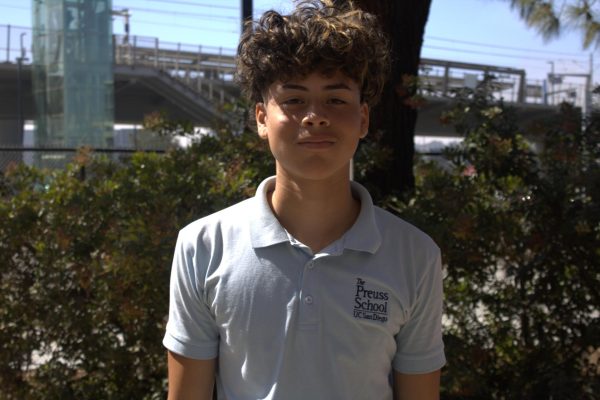Preuss Fall Festival
December 18, 2020
The successful release of the Preuss Fall Festival via Zoom on Friday, November 13 at 7:00 p.m., had an excess of 100 viewers and resulted in fans being turned away and having to wait for an encore presentation the following week. The collection of short films was based on classic horror and featured three scary stories: The Preuss Phantom, The Legend of the Headless Hippie, and The Hunchback of Notre-Dame. These were brought to life enthusiastically by Preuss students under the direction of Drama teacher and Filmmaker Matthew Rocca.
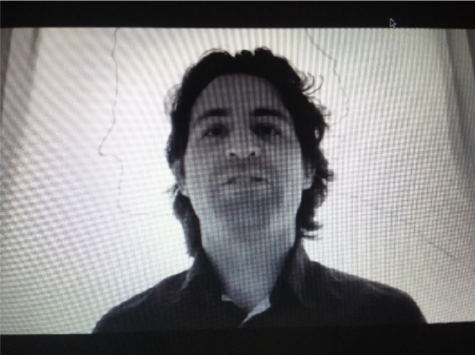 In his playful opening scene, Rocca steps out from the outlined profile that recalled the popular television series of the 1950s “Hitchcock Presents”, created by English film director/producer/screenwriter Alfred Hitchcock, who was one of the most influential and extensively studied filmmakers in the history of cinema. Warning that “viewing pleasure is highly subjective”, “Mr. Rocca Presents” embarked on an exploration of student acting and re- presentation of dramatic characters and horrifying tales, brought tastefully and humorously to the computer screen for the entire Preuss Community to enjoy from the safety of their homes.
In his playful opening scene, Rocca steps out from the outlined profile that recalled the popular television series of the 1950s “Hitchcock Presents”, created by English film director/producer/screenwriter Alfred Hitchcock, who was one of the most influential and extensively studied filmmakers in the history of cinema. Warning that “viewing pleasure is highly subjective”, “Mr. Rocca Presents” embarked on an exploration of student acting and re- presentation of dramatic characters and horrifying tales, brought tastefully and humorously to the computer screen for the entire Preuss Community to enjoy from the safety of their homes.
The first of the trilogy of horror, The Preuss Phantom, is an adaptation of the 1986 musical, The Phantom of the Opera, by English composer Andrew Lloyd Weber. In this version, students discover the Preuss Phantom that hides under the Walton Center stage. Commenting on the fear of the unknown and offering a message of the effects of compassion towards the disfigured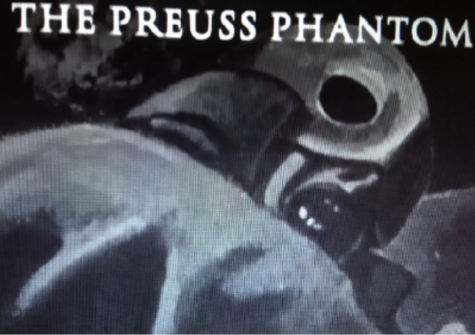 creature, the plot takes its players to the Parisian Theatre. In a cameo appearance as the master of ceremonies, Dr. Dave Weber announces in French the launch of the dance competition, in which students Ashea Brand, Deal Wolde, and Jenny Gian play the main contestants. Thrilling to viewers was the joy captured by the lens in close-up view (a type of shot that tightly frames a person or object) as these students thrived in front of their cameras to portray the characters they had been reading about in drama class. Stephen Sandoval embodied the Phantom stoically in half-face, half-mask.
creature, the plot takes its players to the Parisian Theatre. In a cameo appearance as the master of ceremonies, Dr. Dave Weber announces in French the launch of the dance competition, in which students Ashea Brand, Deal Wolde, and Jenny Gian play the main contestants. Thrilling to viewers was the joy captured by the lens in close-up view (a type of shot that tightly frames a person or object) as these students thrived in front of their cameras to portray the characters they had been reading about in drama class. Stephen Sandoval embodied the Phantom stoically in half-face, half-mask.
The second tale of horror, The Legend of the Headless Hippie, takes place in the 1960s and includes location shooting (the shooting of a film or television production in a real-world setting). In another unexpected cameo role (a brief appearance of a well-known person in a work of the performing arts), Art teacher Tamima Noorzay is seen in extreme close-up to provide a look of horror, which she captures by her haunting gaze as she confronts an off-screen headless monster. José Taboada humorously portrays the cowardly suitor that would rather flee than save her damsel in distress (played by Lexa Lara), only to meet his doom after hitching the last ride of his life. The narrator explains: “A spineless man met his demise by a headless one”.
The third tale, a re-telling of The Hunchback of Notre-Dame (a French Gothic novel by Victor Hugo, published in 1831), is set in 1920s Hollywood during the silent film era. Riddled with visual references —from the silent films of American film director and producer Cecil B. DeMille, to Hitchcock’s 1960 psychological horror thriller Psycho; as well as visual and auditory references with the poignant music of Rosemary’s Baby (1968 American psychological horror film written and directed by Roman Polanski)— The Hunchback of Hollywood captures the abuse of Quasimodo (played by Angel Gonzalez Siller) in the hands of his ambitious mother and greedy filmmaker Frollo (Maria Aguirre Ambario). In this short film, the viewer may see creative uses of the zoom (a camera shot that changes smoothly from a long shot to a close-up or vice versa); as well as special effects (snow falling in L.A.!), with a story that emphasizes that “Love makes magic possible anywhere”, as one character declares.
Fall Festival brings together the talents of its original cast, original student artwork, and original student compositions, with the collaboration of Art of Elan (a local group of arts innovators, music educators, and community builders). Using the laptop camera to film themselves at times seemed limiting and produced a static mise-en-scène (the French term used to describe everything in front of the camera, including the set design, lighting, and actors). However, although lacking dynamic camera movements —one of most important tools in any filmmaker's arsenal— the creative uses of available tools (editing, close-ups, acting, sound editing, costumes, props, Zoom live-streaming) managed to capture and deliver the joyous experiences of its makers, and offered a glimpse of the great potential of these dedicated Preuss scholars.


